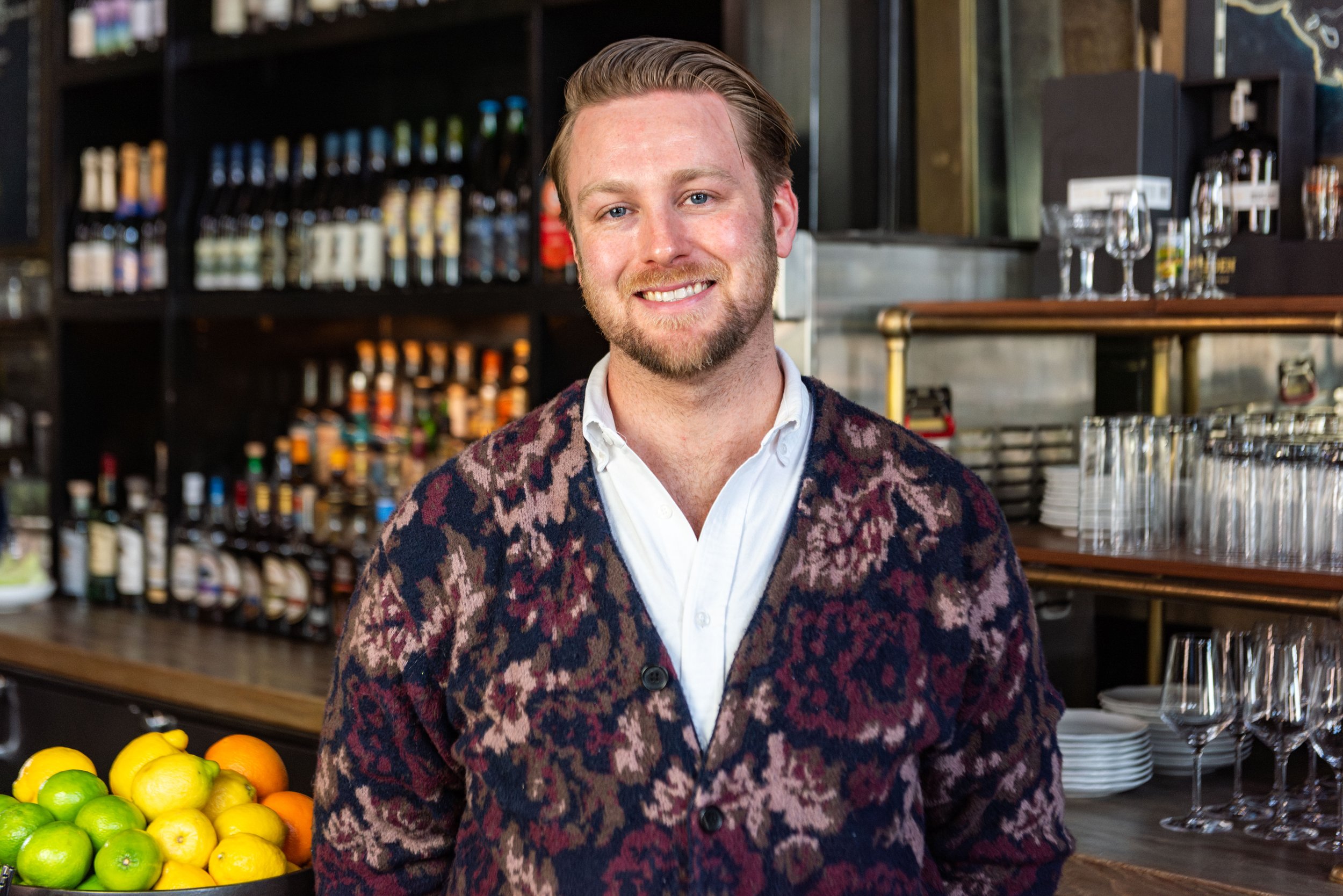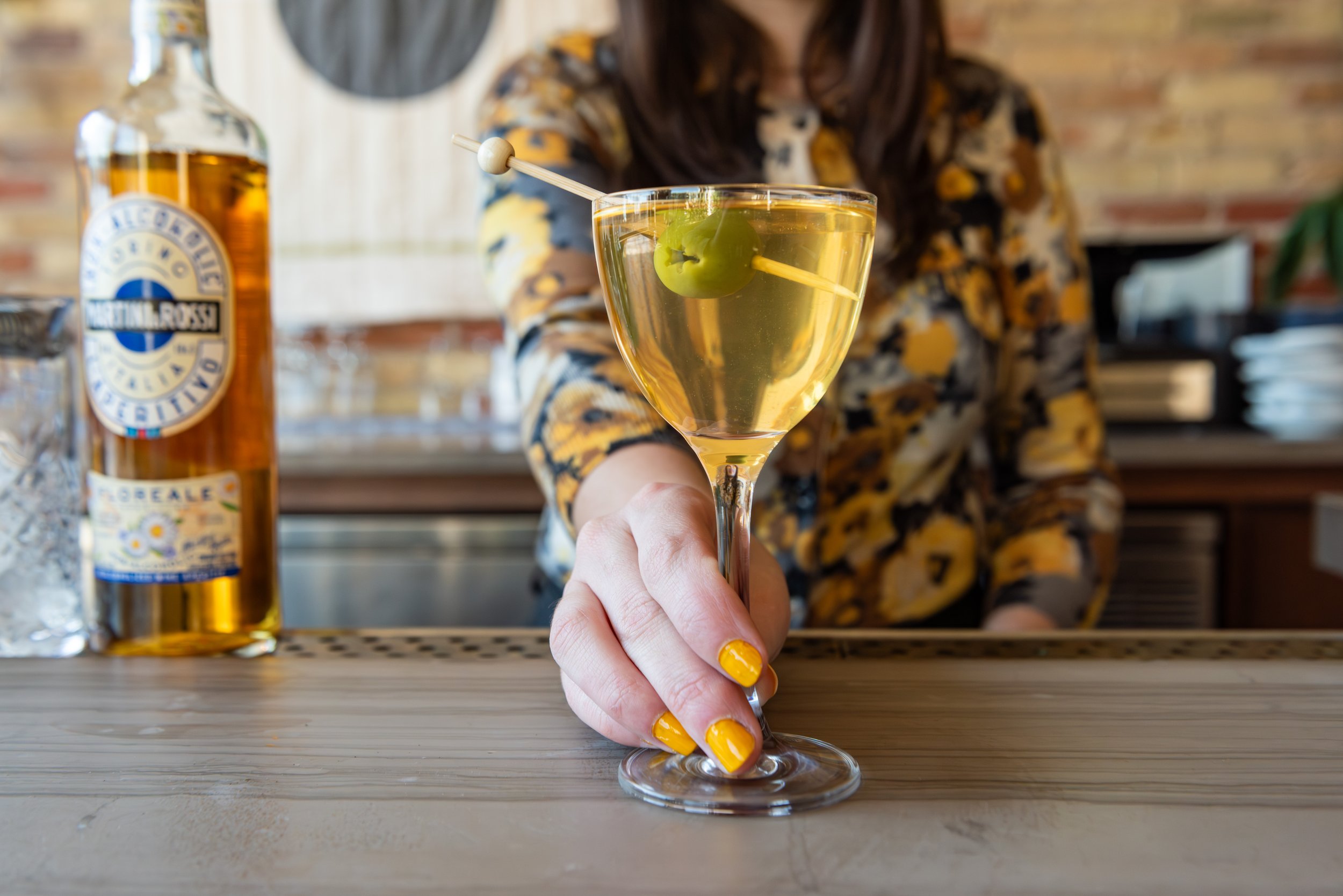Reimagined and Emulsified with Aquafaba
Mizuna bartender Austin Carson has almost entirely ditched egg whites in a quest for tighter emulsifications and reducing waste.
Ghostwriter 2.0: Tequila, Beet, Curaçao, Lime, Yogurt, Aquafaba
You might not recognize it from its ingredient list, but bartender Austin Carson’s Ghostrider was born a Margarita riff.
But a few months after its debut—with blanco tequila, roasted beet-candy corn syrup, lime, and mezcal—it woke up with a new face and attitude. “Candy corn, being the seasonal vegetable that it is, became scarce,” says Carson. At Mizuna restaurant in Denver, there were still a bounty of beets, though, so roasted beet syrup stayed in the mix, along with tequila and lime.
Then things got wild.
After a Mizuna pop-up in which the back of house made drinks and the front of house cooked, Carson was left with flavored yogurts that “naturally made their way behind the bar.” He also has an “endless supply” of aquafaba, or chickpea cooking liquid, from a sister restaurant that serves hummus. The legumes’ starches, proteins, and fibers leech into its cooking liquid and transform it into an egg white substitute that’s popular in vegan baking circles and made appearances in Dan Barber’s WastEd series.
In his Ghostrider 2.0, Carson uses aquafaba, in addition to vanilla-lotus and apple-beet yogurts, to emulsify the cocktail. “When you introduce nonfat yogurt and aquafaba, you get a silky texture,” says Carson. Plus, he says aquafaba emulsifications are tighter and less apt to separate than a drink shaken with egg white. Aquafaba is also less expensive, eliminates waste, and opens up sours and flips to vegans and people with egg allergies—there’s no funky wet dog smell, either.
After the Ghostrider 2.0 and a string of aquafaba successes (including a modified Clover Club), Carson now rarely uses egg whites behind the bar, and Mizuna servers and bartenders discuss preferred emulsifiers with guests who order off-menu drinks







